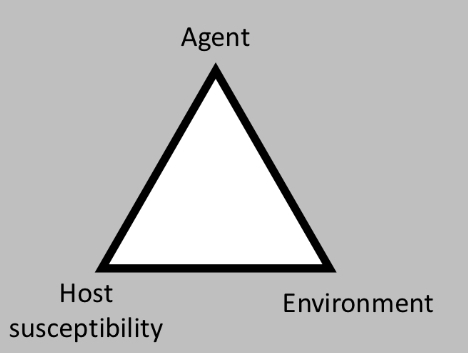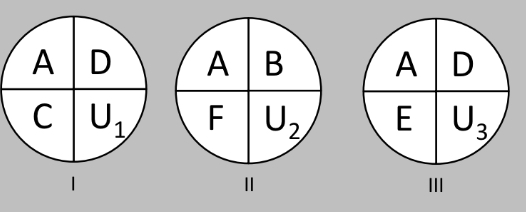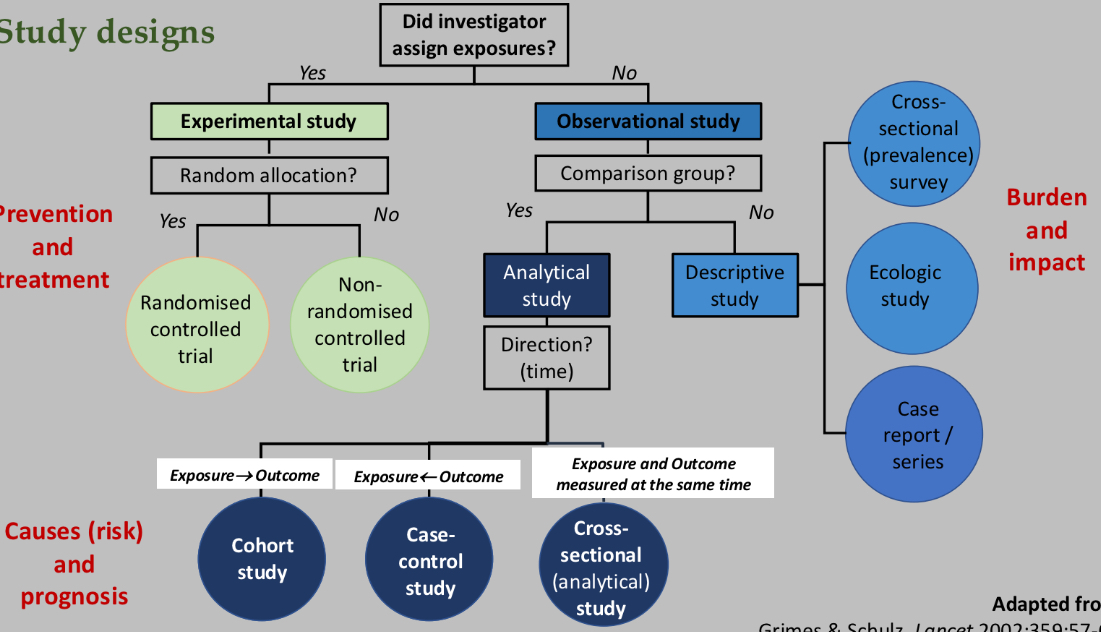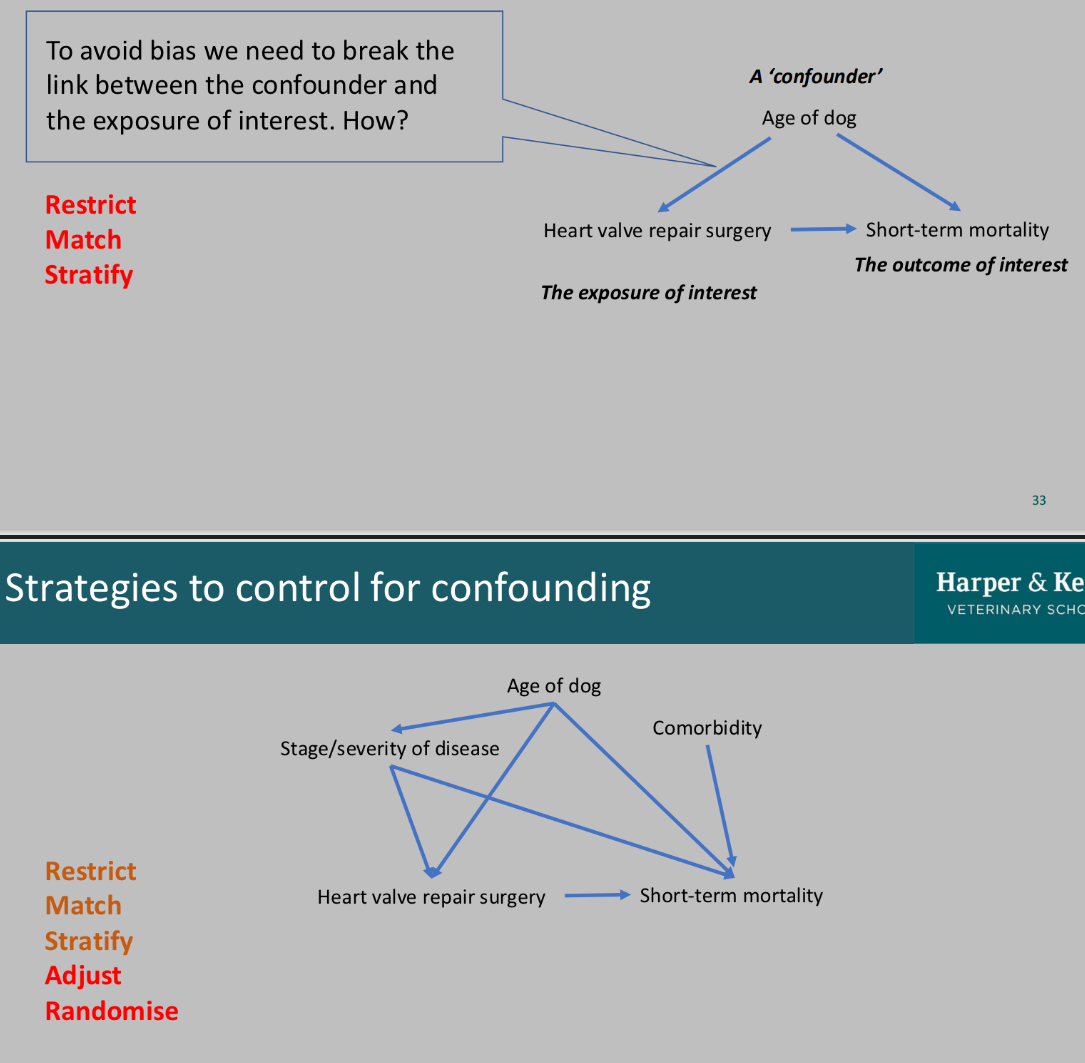Causality and association
1/8
There's no tags or description
Looks like no tags are added yet.
Name | Mastery | Learn | Test | Matching | Spaced |
|---|
No study sessions yet.
9 Terms
What is the epidemiological triad?
A way of thinking about causality in communicable disease.
Encourages thinking about inter-relationship of agent, host, environment
Well-suited to communicable disease.

What is the sufficient component-cause model?
A way of thinking about the multiple causes of complex diseases and health outcomes.
Interaction/accumulation of component causes over time.
Understanding multiple pathways to disease.
Imagine a complex disease with several known component causes A-F and some unknown component causes (U)
Component causes can combine in different ways that make up sufficient casual mechanisms (I-III) that result in disease.
Component cause A is a necessary cause. It is present in all sufficient casual mechanisms. Disease cannot result unless A is present.

Give an example of the sufficient component-cause model applied to feline insulin-resistant diabetes?
A might be obesity
B might be physical inactivity
C might be age
D might be sex
E might be use of glucocorticoids
F might be sub-clinical pancreatic dysfunction
U may be unknown genetic factors

What are potential outcomes/the counterfactual framework?
A way of thinking about the effects of specific causes.
Using imagination, What if?
Narrower focus on defining the effects/interventionist
Example:
. Benjy is waiting for a mitral valve repair surgery
. On January 1st he has his operation
. Five days later he dies
(Does the operation cause his death?)
How do epidemiological studies produce evidence?
In the form of association or correlation.
Whether these associations/correlations represent a cause-effect is a matter of inference e.g judgement.
The statistical association between a determinant and an outcome can’t prove that a relationship is casual.
Helpful diagram:

What should you assess in order to ‘believe’ the results?
What is the role of chance?
What is the role of bias?
What is the role of confounding? Pre-exposure differences between exposed and non-exposed groups that cause the outcome of interest.
What was the sample size?
Is the P-value less than 0.05?
The truth is seen by researchers and practitioners through a series of filters, each of which may have the potential to produce bias.

How do we avoid bias?
You need to break the link between confounded and exposure of interest.
You do this by restricting, matching, stratifying, adjusting and randomising.

What are Bradford-Hill’s “aspects to consider” when trying to infer causality from an association?
Strength- strong associations will generally be harder to explain away by confounding or bias.
Consistency- an association that is repeatedly observed by different research teams under different circumstances may be less likely to be produced by confounding or bias.
Specificity- a cause leads to a single effect not multiple effects
Temporality- we should be a confident that the exposure preceded the outcome
Biological gradient- is there a dose-response, such that higher levels of exposure have a greater effect?
Plausibility - Is a casual connection biologically plausible
Coherence- Does a cause-effect interpretation seriously conflict with other established facts about the disease?
Experimental evidence- Does the removal of the cause prevent the disease?
Analogy- Can we draw any parallels?